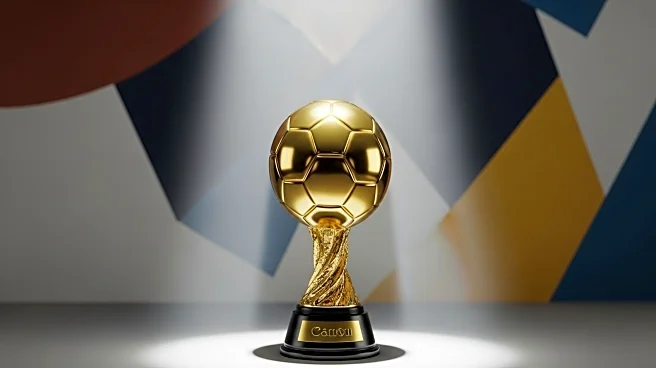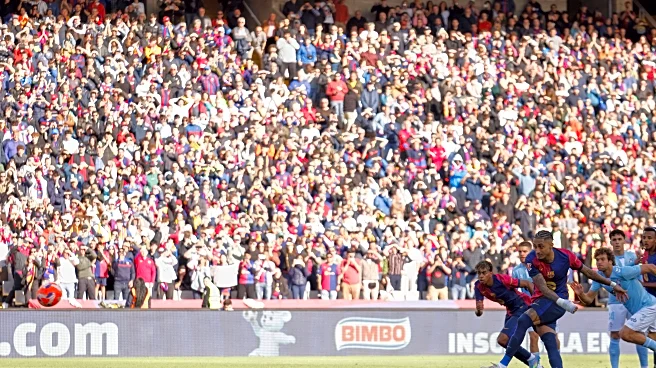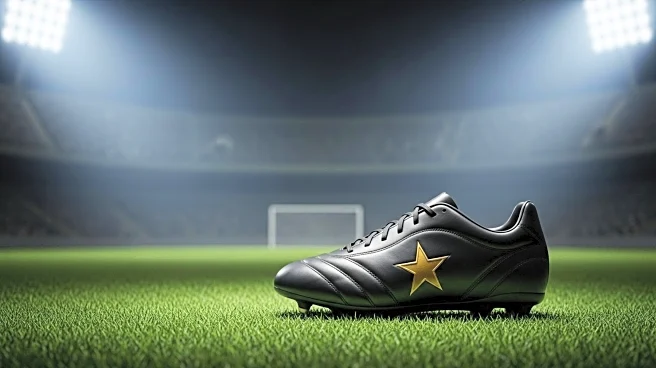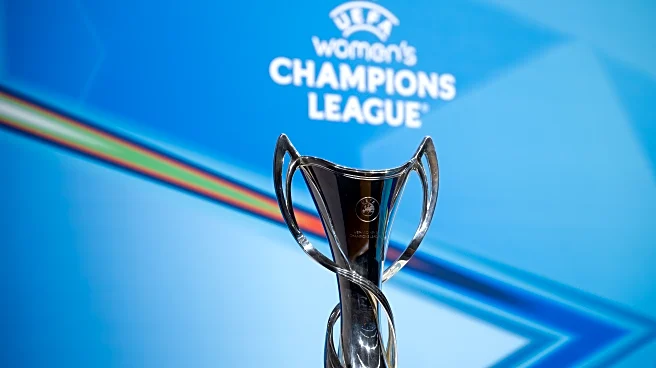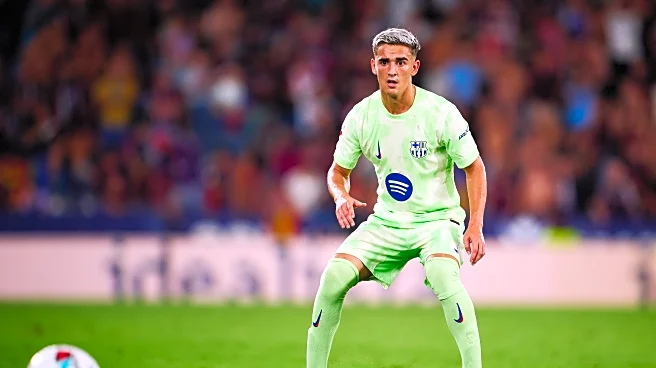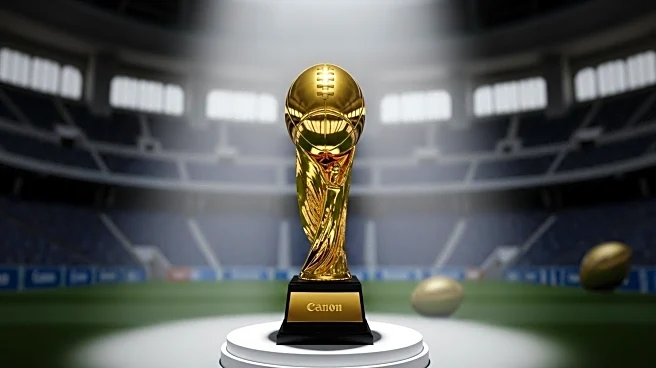What is the story about?
What's Happening?
The Ballon d'Or finalists for 2025 have been announced, highlighting top players from European club football. The men's list is dominated by players from Barcelona and Paris Saint Germain, with Ousmane Dembele from PSG being a favorite due to his impressive season. Dembele scored 29 goals and provided 13 assists, making him a key player for PSG's Champions League victory. On the women's side, the competition is tighter, with Alessia Russo from Arsenal emerging as a frontrunner. Russo's performance for Arsenal and the English National team has been pivotal, although she is closely followed by last year's winner, Aitana Bonmati. The announcement has also sparked interest in the hobby market, with player autographs gaining value.
Why It's Important?
The Ballon d'Or is one of the most prestigious individual awards in international football, recognizing outstanding talent and performance. The announcement of finalists not only highlights the achievements of these players but also impacts the sports memorabilia market. Autographs and collectibles associated with these players are seeing increased interest and value, reflecting their popularity and success. For clubs like PSG and Arsenal, having players nominated for such awards enhances their reputation and can attract more fans and sponsorships. Additionally, the recognition of female players like Russo underscores the growing prominence and competitiveness of women's football.
What's Next?
The Ballon d'Or winners will be announced on September 22, which will likely lead to further shifts in the sports memorabilia market. If Dembele and Russo win, their market value could increase significantly, affecting collectors and investors. Clubs may also leverage these wins for marketing and promotional activities. Fans and analysts will be watching closely to see if the predictions hold true, and the results could influence future player transfers and contract negotiations.
Beyond the Headlines
The Ballon d'Or nominations reflect broader trends in football, such as the increasing visibility and recognition of women's sports. The tight competition among female players indicates a shift towards more equitable recognition in the sport. Additionally, the focus on European clubs highlights the dominance of these leagues in global football, which could influence the development of players and clubs in other regions.
AI Generated Content
Do you find this article useful?
